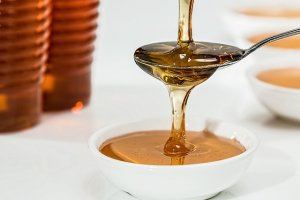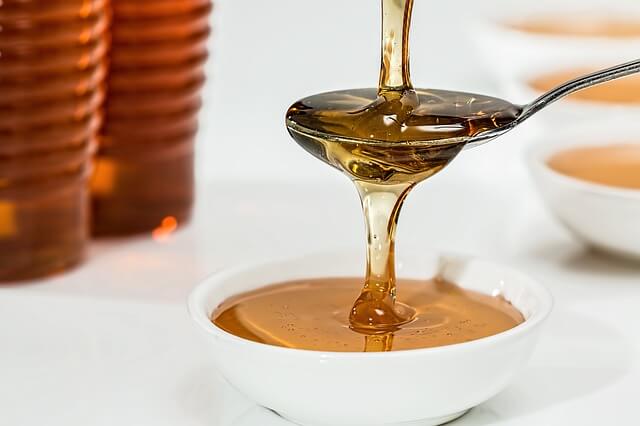
Ok, it really wasn’t my plan to quite so quickly pen a follow-up to last week’s “The SWEET Guide to Navigating Breast Cancer & Sugar”, but the response to that information has been so overwhelmingly positive, I still have A LOT to say/share, and I’m up to my eyeballs in sugar research, so I thought, what the hell, I’ll add this information, and then give the sweetness a rest for a bit.
This week, though, I’m narrowing it down and profiling what I would classify as “the big three” most common sweeteners grandstanded in the social media world (the not-always-so-sciencey part of that world) as the always “healthier”, “better”, “more nutritious” choice, and well, let me just clear some of that up so you can make the best decision for YOU.
Start with “WHAT”?
When you choose a sweetener for its “healthfulness”, ask yourself what sort of “healthy” you’re looking for; weight management, lower or stable blood sugar for diabetes control, reducing breast cancer risk, favorable lipid profiles (i.e. cholesterol, triglycerides), or perhaps simply to support general good health. “Healthy” means different things to different people, so get clear on what you want to accomplish by adding (or removing) a particular sweetener to or from your diet.
In my experience, when someone asks me “Is _____ food “good” for you?”, they’re not asking me if the food confers health benefits, rather, they’re referring to weight, as in, “Will____ food make me gain weight?”
For those of you in my breast cancer community, I can say with fairly strong confidence that your “what” is risk reduction, yet you may also be managing other medical conditions (like diabetes or heart disease), so don’t forget to include that piece when making your selections.
And finally, there are many variables that can alter your individual response to eating sugar, in any form.
For example:
- total calorie intake level (or total “load” as we call it in the RD world)
- type of sugar
- disease state (i.e. cancer, diabetes, fatty liver disease, metabolic syndrome, etc.)
- genetics
- ethnicity
- race
- physical activity level
Agave Nectar/Syrup
What’s it made of?
- Agave nectar/syrup is mainly fructose, with the remainder primarily glucose and inulin (a starchy substance found in a wide variety of fruits, vegetables, and herbs.) The high amount of fructose, together with inulin results in a low GI (glycemic index), yet because agave is rarely eaten in isolation (it’s consumed WITH other foods), its glycemic rating should be only one consideration in your decision as to whether or not to include agave in your sweetener lineup.
~~ Calories in 1 teaspoon? 20
What’s its health implication?
- A recent study on mice suggested that agave nectar/syrup promotes better metabolic responses than sucrose, and a 2014 animal study demonstrated that supplementation with agave fructans prevented bone loss and improved bone formation. (1, 2)
Honey
What’s it made of?
- Honey is a combination of glucose and fructose, as well as tiny amounts of “other” carbohydrates. Its actual composition can vary depending on the variety and “type” of flower contributing to a particular honey’s creation. In rat studies, relative to sugar, honey has been demonstrated to promote improvements in risk factors for weight gain, lipid profiles, and triglycerides.
~~ Calories in 1 teaspoon? 21
What’s its health implication?
- A very small (10 subjects) human study conducted in 2003 concluded that honey increased antioxidant and iron levels, and decreased fasting blood sugar. (3, 4, 5)
Maple Syrup
What’s it made of?
- Maple syrup is a boiled sap that contains a mix of sucrose and the invert sugars glucose and fructose (the actual amount of each type of sugar varies with the source and the method of production), that result from the heating process.
~~ Calories in 1 teaspoon? 17
What’s its health implication?
- Up to 53 different types of phytochemicals that are naturally present in maple tree sap have been identified, and a 2011 study suggests that certain extracts from maple syrup may have potential in type 2 diabetes management. (6, 7)
The Take-Away
There you have it, a brief overview of “the big three” sweeteners that are heavily promoted as always the best choice for cooking, baking, tea, and pancakes.
Here’s my take:
The fact that honey and maple syrup both have been shown to contain antioxidant properties makes them my first choice for positively impacting breast cancer at the cellular level; antioxidant activity from any food can help reduce free radical cellular damage. However, they’re not calorie-free (extra calories from ANY food can lead to weight gain, a breast cancer risk factor) and although they’re natural, they’re still sugar, and tend to be found in foods that aren’t typically as nutritionally robust as others; i.e. cakes, cookies, etc.
If you like the flavor and consistency of agave nectar/syrup (it’s “runnier” than honey), there’s no reason not to enjoy it. The GI (glycemic index) of agave nectar is good to know, yet it doesn’t hold too much importance. The GI of a food is determined on a “single food” status, meaning the GI rating is based on how much of a particular food is eaten on its own. That could be meaningful if you were to add agave as a sweetener to your tea or coffee, but enjoying a slice of cake or a sandwich with that tea or coffee renders a shift in the GI.
In the end, regardless of which of these three sweeteners you choose, remember the guideline from last week’s blog; limit daily CALORIES from added sugar (each of these is considered ADDED sugar; they don’t naturally occur in any one food) to 10% or less of your daily calorie intake. For most women, that comes out to 180-210 CALORIES per day from added sugar.
__________________
“You’re a Fancy-Pants Dietitian, I Bet You NEVER Eat Anything Sweet. But In The Event That You Do, What Would It Be?”

Mmmmm, love my extra dark chocolate.
I lean more toward a “crunchy, salty” food preference – although I’m always and forever a chocolate fan – but since starting my post-treatment AI’s, I seem to have a slightly increased taste for sweet.
For some WHOLE FOOD ideas to manage your sweet tooth, here are my standard “go-to” sweet bites:
- Medjool dates dipped in unsalted almond butter, often paired with 85% dark chocolate (dark chocolate has LESS sugar.)
- Dried Turkish figs dipped in unsalted peanut butter OR melted 85% dark chocolate.
- Frozen bananas dipped in melted 85% dark chocolate.
- Mission figs dipped in melted 85% dark chocolate; let the chocolate harden, eat.
- Green and Black’s 85% Cacao Bar straight up, no chaser (only 5 grams of sugar per serving).
- Any baked good that I make at home. I cut sugar DRAMATICALLY in recipes because I don’t like oversweet treats, and use dates, honey or maple syrup in place of sugar as often as I can.
- Homemade raw energy balls/bars sweetened with dates and/or honey.
- Chopped apple, walnuts, cinnamon, honey drizzle heated in the microwave for ~30 seconds.
Click here to get my FREE nutrition & fitness JUMPSTART WORKSHEET!
SOURCES
- “Effects of agave nectar versus sucrose on weight gain, adiposity, blood glucose, insulin, and lipid responses in mice.
- “Agave Fructans: Their Effect on Mineral Absorption and Bone Mineral Content”
- “Effects of daily consumption of honey solution on hematological indices and blood levels of minerals and enzymes in normal individuals.”
- “The Long-Term Effects of Feeding Honey Compared with Sucrose and a Sugar-Free Diet on Weight Gain, Lipid Profiles, and DEXA Measurements in Rats”
- “Honey promotes lower weight gain, adiposity, and triglycerides than sucrose in rats.”
- “Further Investigation into Maple Syrup Yields 3 New Lignans, a New Phenylpropanoid, and 26 Other Phytochemicals”
- “In vitro evaluation of phenolic-enriched maple syrup extracts for inhibition of carbohydrate hydrolyzing enzymes relevant to type 2 diabetes management”

